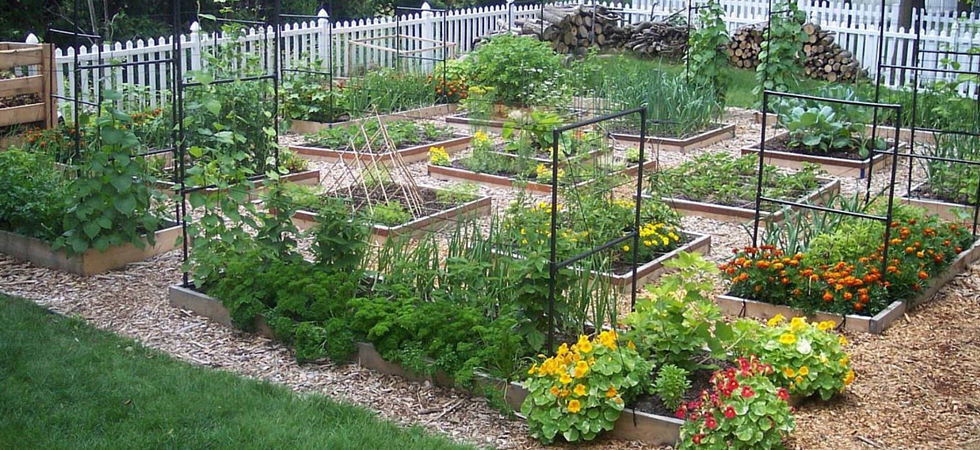Get Going on Gardening – Part 2
by St. Funogas, Survival Blog:

If you’re on a tighter budget, then there are inexpensive ways to create a lot of compost for next year’s garden. You can start a huge compost pile by cleaning out chicken coops, animal stalls, obtaining mushroom spawn from your local mushroom farm, adding grass clippings, Starbucks coffee grounds, dead leaves, etc. Do some googling and brainstorming to come up with ideas on how to get as much organic material as possible to get a huge first-year compost pile going. The woodier and the chunkier the materials, the slower they will compost so avoid things like wood chips and sawdust. Leaves will compost more quickly if you run over them with a lawn mower several times. If you are going to be using lawn clippings, it is best to let them dry out on the lawn before raking them up and adding them to the compost. Otherwise, they will tend to mat down and not compost well.
One thing I highly recommend, which is a super-easy way to speed up your composting, is to save all your urine and pour it over your compost pile. (Guys, you can also make what I call a “direct deposit.”) Urine is a hugely overlooked resource that I rarely see discussed in TEOTWAWKI situations, or gardening and self-reliance blogs. Urine is basically sterile so it is safe to work with. Not only that, but it is a source of free nitrogen. Since we no longer have the freedom to buy bagged ammonium nitrate in this country, there is not a cheaper, easier way to apply nitrogen to our gardens and compost piles, than urine. It also contains potassium and phosphorus, two other nutrients gardens are often lacking.
Since urine also contains salt, if you are using it directly in the garden soil then dilute it down to about 4:1 before pouring it onto any plants. If you want to see some radical results, here’s a fun experiment to try. Pour some diluted urine on the soil around every other tomato plant in your garden and take a look at them three days later. The treated plants will be much darker. You can also pour urine on tree stumps to help speed up the rotting process.
Nitrogen is going to be the limiting factor in your compost pile. If you don’t have access to a lot of animal manures (many of which will have urine mixed in) then adding supplemental nitrogen will allow you to add much more brown material (dead, low-nitrogen things like leaves, sawdust and straw) to your compost pile and still have it degrade by next year to be able to add to your garden. Urine is free, and it seems crazy to just flush it down the toilet when you can convert it into “compost quickener” and then into beautiful garden soil. Again, it’s basically sterile and safe to work with. If you are trying to create a lot of compost in a hurry and need nitrogen but are adverse to the idea of using urine, then google “garden nitrogen sources,” or check Amazon and Walmart, and see which other nitrogen sources you might be comfortable with.
One last thing on soil improvement. If you are going to be planting any perennials in your garden such as raspberries, you’ll want to improve that soil first since you won’t be able to improve it much more after you get the raspberries planted. They’re not too picky anyway so unless you have especially bad soil, they should do okay. But you can always transplant them to better soil later on as well.
- Find out which varieties perform best in your exact location
This task will be time consuming but well worth the effort. I’ve been working on this one for ten years and still have a ways to go, but for me, it’s a very fun, challenging, and rewarding project.
For each of your high-value crops I recommend you try several varieties each year until you find one that is a superior performer in your particular garden. This is going to be more important on crops such as tomatoes, potatoes, squash, dry beans, tomatillos if you make a lot of salsa, and any other crops which you will be using a lot of for storage and canning.
Trialing is also important on herbs. I had to trial five different oregano varieties from different seed companies before I finally found one that was sufficiently flavorful (after drying) to suit my needs. Since it’s one of my most used herbs, it was well worth the effort. Fortunately, it’s also a perennial so I now have a lifetime supply of oregano.
Other herbs may require rogueing. I like a basil called Reddy Freddy because it’s dark purple and shows up nicely in recipes. Since a small percentage of the plants come up green, I weed those plants out to keep the seed I harvest producing as much red basil as possible in the next year’s crop.
A CASE STUDY FOR PERFORMANCE TRIALS
As a chili addict, I have been trying to find which of the hundreds of dry bean varieties will work best in my garden.
Here is an example of the kinds of characteristics you should be looking for as you evaluate varieties. The three dry bean varieties I grew in 2019 were called Hog Brains, Good Mother Stallard, and Garbanzos. Good Mother Stallard scored big points for growing straight up the trellis and then spreading out. That saved lots of space in the garden and made weeding easier. Hog Brains refused to grow up the trellis and spread out sideways instead. (They should have called it “No Brains.”) Each variety had 8 feet of row and the same number of plants. Hog Brains won hands down as best variety for the following reasons: Harvest was more than double the weight of Good Mother Stallard, all ripened at the same time, and they were super easy to shell. If I dedicate several rows to Hog Brains this year, it will more than likely supply all the chili beans I need for an entire year. While I am growing those, I will trial two more varieties just to be sure there isn’t something even more productive or tastier than Hog Brains. Garbanzo, which I was trialing for hummus, failed miserably and I harvested two whole beans. A fourth variety called Purple Yard Long can be used as a green bean or a dry bean. I use it as a green bean in a pickled three-bean salad which I use for canning. Since I was doing dry bean trials this year, I decided to let a portion of the crop mature to the point of drying so I could evaluate them as dry beans. This variety was a total failure as a dry bean. Insects scarred most of the dry beans in the green stage so they were deformed, the harvest was minimal, and the beans small. Of the four varieties trialed, Hog Brains won by a landslide.
What works for me won’t necessarily work in your garden so it is very important that you do trials to see what performs best for you and your tastes. If you have a seed vault, plant those varieties and start there. If you’re on a budget, do some googling and find a seed exchange in your area, or if there isn’t one close by, drive around and find a few large gardens in your area and just stop and talk to the owners. I’ve yet to meet a gardener who didn’t want to blab about their garden so they’d probably love to make your acquaintance, share some stories with you, and probably give you some free seeds as well. If somebody knocked on my door, I could set them up with more free seeds than they could handle for this year. There are a lot of other gardeners who would probably be more than happy to do the same thing if you just ask. Try it, what have you got to lose? Showing up with a basket of warm muffins will probably increase your odds. If they aren’t seed savers, they can at least give you some good advice on variety selection and other details to help you get started. And best of all, they may even turn into a mentor.
Loading...


